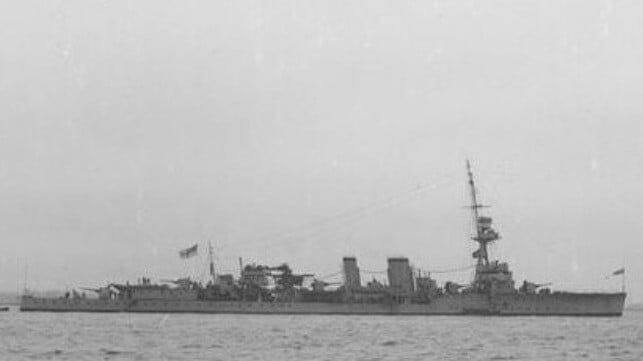Uncovering the Secrets of HMS Cassandra: A Blueprint for Environmental Preservation
A team of experts is embarking on a groundbreaking mission to study the wreck of HMS Cassandra, a British World War I warship resting at the bottom of the Baltic Sea. This endeavor not only aims to unravel the mysteries of this historic vessel but also serves as a crucial step towards addressing the environmental threats posed by wartime shipwrecks.
Lost in December 1918 after striking a mine, HMS Cassandra lies just 20 meters below the surface off the Estonian island of Saaremaa. The Ministry of Defense Salvage and Maritime Operations (SALMO) team, in collaboration with Waves Group, is spearheading this initiative in response to the urgent call by Project Tangaroa to tackle the looming pollution risks associated with thousands of sunken vessels from World War I and II.
Project Tangaroa, a global consortium of experts, highlighted the pressing need to address over 8,500 potentially polluting wrecks worldwide, containing hazardous substances, unexploded munitions, and millions of tonnes of oil. These wrecks, with their deteriorating conditions after 80 to 110 years underwater, pose a significant environmental hazard that demands proactive management.
Experts warn that without intervention, the cost of mitigating pollution from these wrecks could soar to $340 billion, alongside irreparable damage to marine ecosystems and coastal communities. The study of HMS Cassandra, discovered in 2010 by the Estonian Navy and Maritime Museum, is pivotal in laying the groundwork for effective strategies to address this imminent threat.
Historical Significance of HMS Cassandra
HMS Cassandra, commissioned into the Royal Navy fleet in 1917, played a vital role in World War I and later participated in the Allied intervention in the Russian Civil War to support Baltic States’ independence. Tragically, on December 5, 1918, the cruiser met its demise after hitting a mine near Saaremaa, resulting in the loss of 11 crew members out of 400.
Recent imaging of the wreck by the Royal Navy ship Echo revealed HMS Cassandra lying on its starboard side, with a significant portion of its bow missing. The upcoming detailed survey of the wreck promises to provide invaluable insights into the preservation and management of wartime shipwrecks.
Setting a Blueprint for International Collaboration
Matt Skelhorn, Head of the UK MOD Wreck Management Programme at SALMO, emphasizes the potential of HMS Cassandra to serve as a blueprint for global cooperation in addressing the risks posed by polluting wrecks. The SALMO team’s involvement in Project Tangaroa underscores the importance of sharing expertise and best practices in managing wrecks worldwide.
As experts delve deeper into the secrets of HMS Cassandra, their findings are expected to pave the way for more effective strategies in safeguarding ocean environments and coastal regions from the looming threats of wartime shipwrecks. Through collaborative efforts and innovative solutions, the legacy of vessels like HMS Cassandra can be preserved while mitigating the environmental time bombs they harbor.

